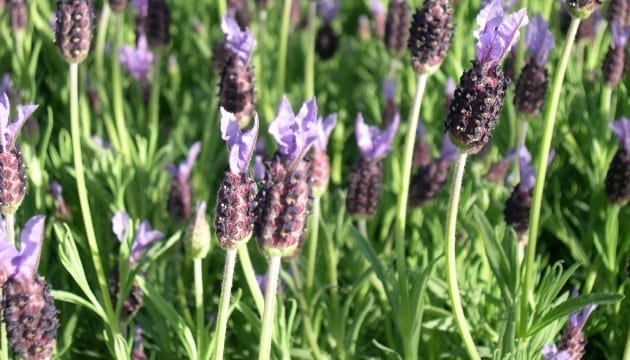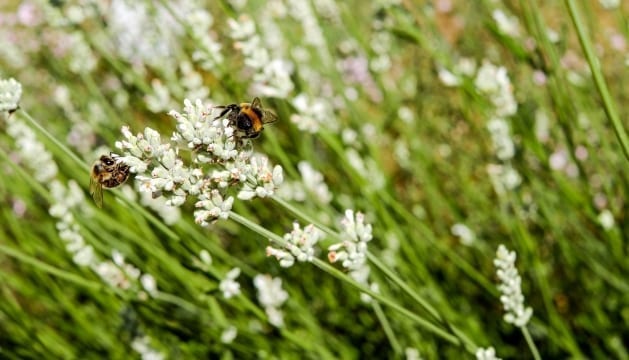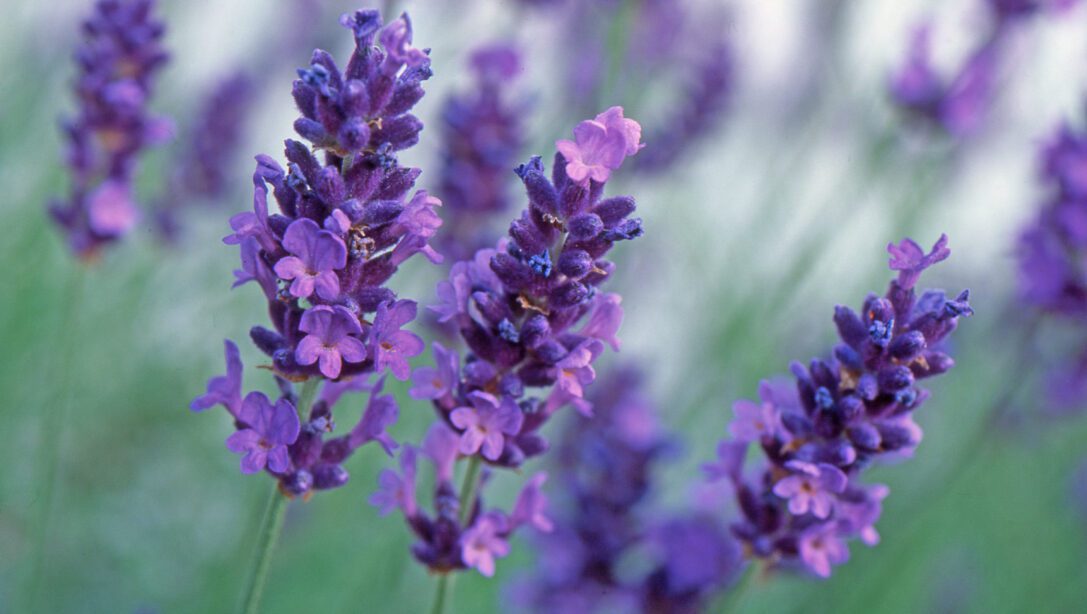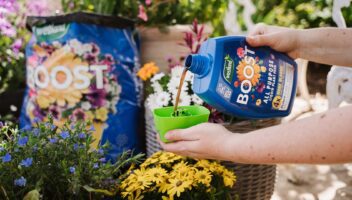Lavender is an easy to grow, evergreen shrub, with distinctively scented flowers and foliage. The silvery grey or green foliage beautifully complements the masses of flowers that top the plant, and its drought tolerant nature means that it is perfectly happy in a sunny border or container, and will thrive in a gravel or rock garden, adding scent and colour to even arid areas of the garden.
View Our Collection Of LavendersLavender Factfile
Type: Lavender plants are evergreen shrubs/herbs.
Flowering/fruiting time/colour foliage times: Summer flowering.
Sun Requirements: Sunny, open position.
Soil: Lavender plants require well-drained, neutral or slightly alkaline soil. They are also extremely drought tolerant.
Hardiness: English Lavender is hardy, surviving cold winters. French Lavender, on the other hand, is half hardy to tender.
Size (height x width): Most varieties will grow to a height of two to three feet, with a similar spread.
Top Lavender Varieties
Lavandula angustifolia (English Lavender)
Also known as ‘common lavender’, this small aromatic species is compact and bushy, growing to around one metre tall, but can often be wider than this. The flowers can range from pale to deep purple and are contained in short, dense spikes upon long, unbranched stalks.
Lavandula angustifolia ‘Hidcote’
‘Hidcote’ has narrow, silvery-grey leaves with the traditional deep violet-purple flowers in dense, aromatic spikes, great for bees and butterflies, but also well used in cooking or drying for crafts.

Lavandula angustifolia ‘Hidcote’
Lavandula stoechas (French Lavender)
This variety is less hardy than English Lavender and can be recognised by its distinctive tufted petals at the top of each flower and its grey, serrated leaves.
Lavandula stoechas ‘Papillon’
This is an exquisite variety, with deep purple flowers topped with lilac petals, that seems to mimic the look of butterfly wings.

Lavandula stoechas ‘Papillon‘
Lavender Plant Care
Lavender is best planted in spring. This allows the plant to make the most of the soil as it is beginning to warm up. For the happiest lavenders, make sure that they are planted in free-draining, poor or moderately fertile, alkaline or chalky soil.
If you have heavier soil but are determined to have lavender in your garden, add some organic matter before you plant it to improve the drainage.
It is important to prune lavender after flowering. Cut it back to just below the flower stem, but not so far as the bare wood. In order to maintain a compact shape, it must be pruned every year. Whilst lavender is easy to grow and maintain, once it gets old and woody, it is very difficult to rejuvenate, so it is best to replace.
If growing in pots, add some coarse grit for improved drainage.
Lavender Fact
The scent deters mice, flies, mosquitoes and other pests from the surrounding area and 2500 years ago, it was even used in ancient Egypt during the mummification process!
Complementary Planting Ideas
Lavender looks beautiful when planted in front of pink roses, with the colours and scents combining to a heady effect. It also suits being planted with herbaceous perennials such as echinacea or aster, to create a dramatically bold border. Lavender, of course, can also be added to a herb garden, complementing other woody herbs that can cope with drought, such as rosemary.

Harlow Carr (Aushouse) with Lavandula angustifolia ‘Hidcote Blue’
Why Is Lavender a Fantastic Garden Plant?
Lavender makes a fantastic addition to any garden for many reasons. It can be planted in areas that many other plants can struggle with, so is perfect for filling troublesome spots. The varieties have a distinctive, relaxing scent, that promotes a sense of calm when brushed against, so is great for pathways. It is very easy to care for, even a novice or unenthusiastic gardener can enjoy its beauty and scent, and its versatility means that it is happy in pots, borders and rockeries, and can be used in cooking, floral arrangements, and can be dried and used as pot pourri.
It is also loved by bees and butterflies, making it a fantastic for pollinators.
Lavender is also an ideal plant for a sensory garden, thanks to its uniquely textured flowers and foliage and calming scent.

Lavender is great for pollinators, loved by bees and butterflies





